
After leaving the Gaspe peninsula we started down the Acadian coast in New Brunswick. The first stop was the Acadian Historical Village in Caraquet. This is somewhat like Old World Wisconsin; they moved about 40 Acadian homes, farms, business shops, a church, school, etc from their original locations to this outdoor museum. The buildings date from 1770 to 1939. Each farm or business has a guide or two dressed in period costume and engaged in a typical activity for the period. As you approach them, they explain what they are doing and give some historical background on the home, farm, or business. In a sense it is "living history". We were there on a Sunday afternoon, so most of their activities were ones appropriate for Sunday.

One of the Acadian farms, with chickens, pigs, and a cow.
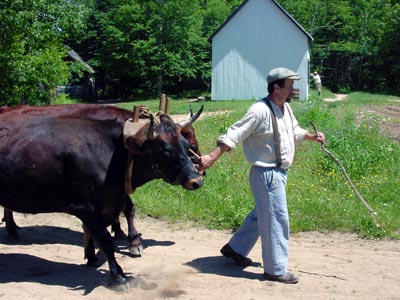
An "Acadian farmer" with his oxen.
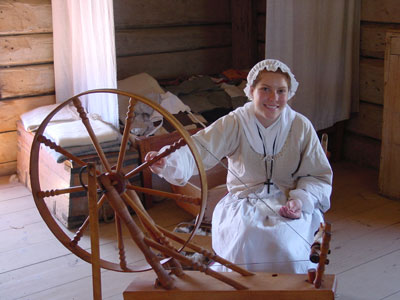
This lovely young lady was using her spinning wheel to make yarn.
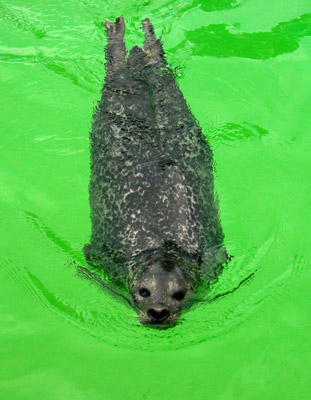
After the Acadian village we headed for Shippigan, where we visited the
Aquarium and Marine Centre. They have a nice collection of fish and sea life
appropriate to the area. This seal had just been fed and swam contentedly about
in the seal tank.
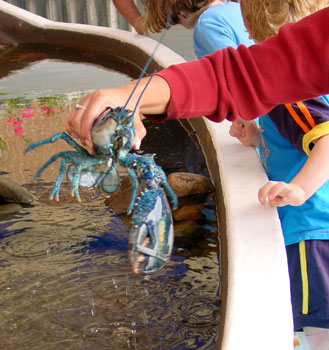
A novel feature of the Aquarium was a tank where you could pick up some star
fish and a blue lobster. Yes, the lobster was really blue. Apparently, lobsters
come in many colors. But they all turn red when cooked in boiling water.
Fortunately, this lobster had his pincers banded together so he couldn't
retaliate if he didn't want to be handled.
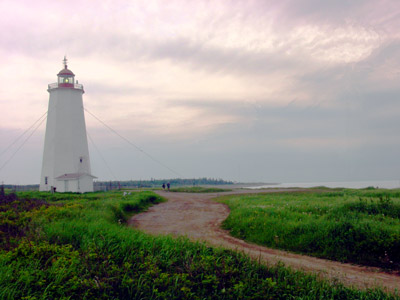
At the end of the Acadian peninsula is the island Ile Miscou. At the far end
of the island is the Miscou lighthouse, which is said to be the oldest still
working wooden lighthouse in the Maritimes. There was really nothing else
around and very few people were there, so you had the impression of remoteness
and being away from the tourists.

Our final stop on the Acadian coast was Kouchibouguac National Park; it is
pronounced Koo-she-boo-gwack, which is a Mi'kmaq word meaning "river of long
tides". Here the land is flat and the tides flow upstream several kilometers.
This park is reported to have the warmest salt water north of Virginia. It has
sand dunes just offshore; you have the choice of swimming in the "ocean side"
water, or in the warmer lagoon between the dune and the shore. You can also rent
canoes or kayaks and go exploring the lagoons and rivers, or ride bikes on the
60 km of good bike trail; we chose to do the latter.
Kouchibouguac also has small, but ferocious mosquitoes, which we found out the hard way. Some had invaded our Roadtrek during the evening, which we attributed to getting in whenever the door was opened to go in or out. We eliminated them as best as we could before we went to bed. But we were besieged by mosquitoes all night, buzzing and feeding on us. After a few hours of fitful sleep interrupted by swatting at mosquitoes we got up at 4:30 AM to survey the situation and found at least 30 mosquitoes inside our Roadtrek. They had managed to get into our Roadtrek somehow while we were in bed, although I still haven't figured out how. Out of desperation we closed all windows and vents (I even put duct tape over the air conditioner vents), even though they had screens on them, and proceeded to kill every mosquito we could find before we headed back to bed. The rest of the night was better, but still not perfect. I hope we don't run into that again; I don't relish the thought of putting on "bug juice" to go to bed.